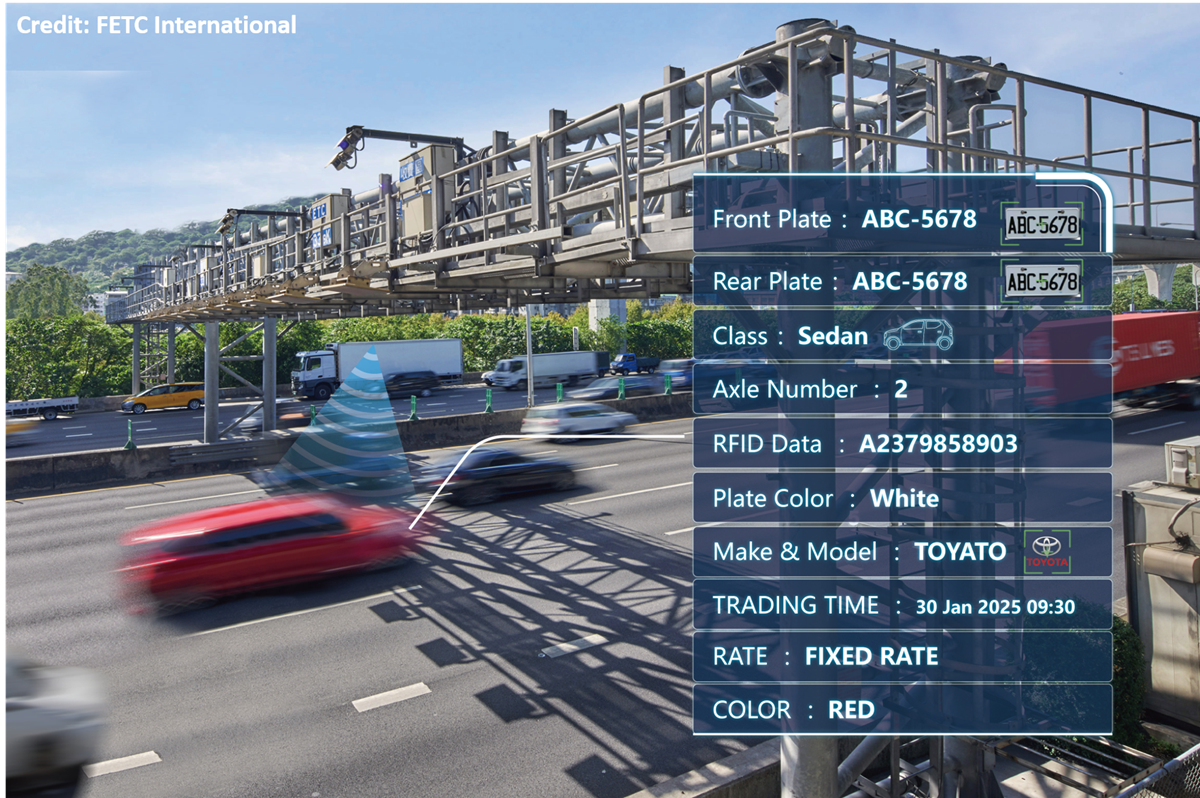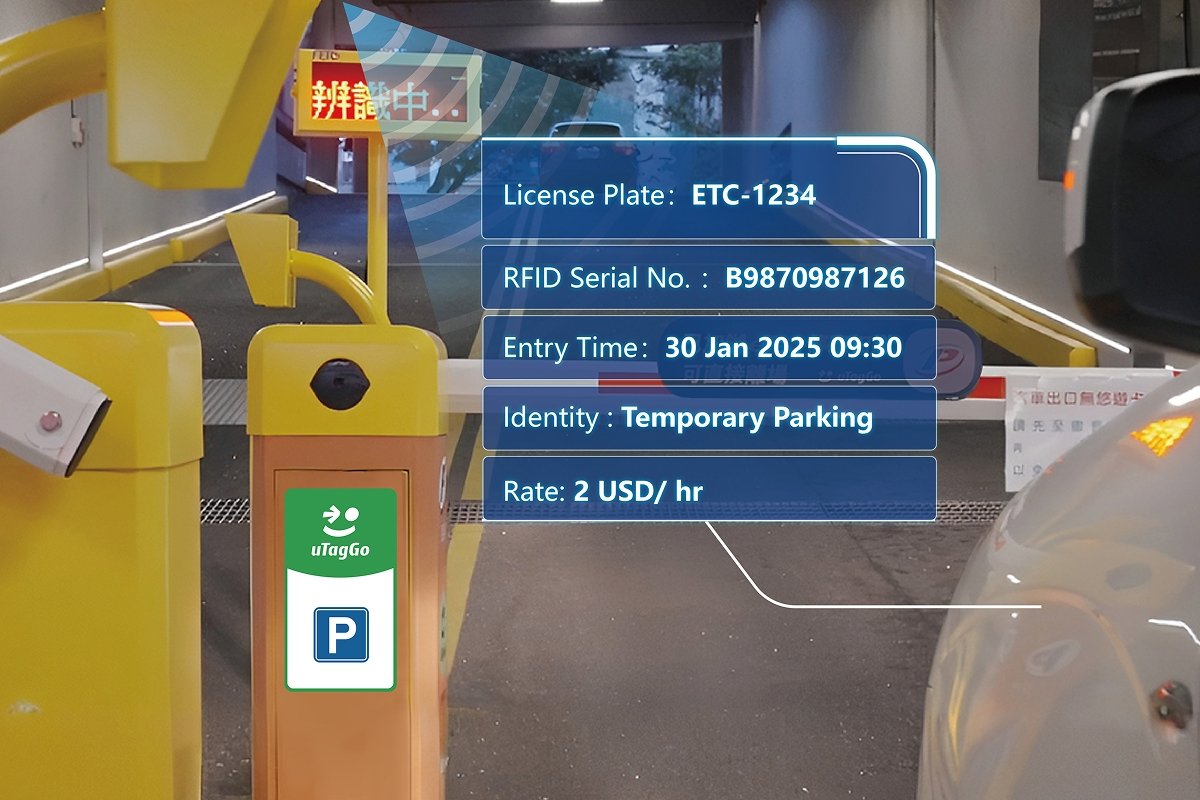- Resources
- Application Stories
- AAEON & FETCi Navigate the Journey to AI-ALPR

Upon its introduction, Automatic License Plate Recognition (ALPR) reshaped how various challenges in transportation were handled, with parking lots becoming largely automated, the bottlenecks previously seen at highway tolls disappearing, and traffic law enforcement streamlined. In the AI era, the shortcomings of traditional ALPR, such as adverse weather conditions affecting detection accuracy, are becoming a thing of the past.
To disrupt the traditional ALPR market, leading provider of smart transportation solutions FETC International (FETCi) worked with AAEON to bring a multipurpose AI Automatic License Plate Recognition (AI-ALPR) solution to market.
Employing a combination of high-performance edge computing, multimodal sensor inputs, and proprietary AI models designed to target the most common environmental and human factors that affect the accuracy of vehicle identification, FETCi’s AI-ALPR is at the forefront of dynamic, AI-driven roadside solutions that remove the blind spots from ALPR.
Challenges: Beyond the Lens
There are a number of challenges faced by traditional ALPR systems, caused by both environmental factors and human behavior. FETCi noted that a large proportion of inaccurate readings are caused by traditional ALPR systems’ inability to clearly identify license plate numbers in adverse weather like heavy rain or fog due to the lower quality of images obtained.
Further challenges come from human factors such as cloned plates, deliberately or inadvertently distorted plates, and even the speed at which vehicles travel. This is not to mention the surprisingly vast differences in license plate design across different regions, with countries such as Thailand relying as much on the background color as a unique identifying metric of license plates as the plate number itself.
FETCi recognized that while the algorithms deployed in traditional ALPR systems are built to be effective in controlled and predictable environments, they often lack the ability to process secondary data, such as vehicle make, model, color, and axle details. With the ever-increasing sophistication of machine learning algorithms however, FETCi was determined to find a way to overcome these challenges.

Given the sheer volume of information that FETCi’s AI-ALPR system would receive, as well as the edge inferencing capabilities needed to process such data without latency, the company chose a two-pronged approach. Combining AAEON’s MAXER-2100, a 13th Generation Intel® Core™ powered AI Inference Server equipped with an integrated NVIDIA RTX™ 6000 Ada GPU with AAEON’s BOXER-8621AI, a system-on-module featuring the NVIDIA® Jetson Orin Nano™ equipped with an FETCi camera, FETCi was able to develop a comprehensive system that combined efficient edge computing, high-performance GPU processing, and multi-modal AI fusion.
The Road to AI Adoption
FETCi’s AI-ALPR system performed multiple simultaneous functions, beginning with high-resolution image capture via FETCi’s camera installed on the BOXER-8621AI. While not capable of executing the advanced deep learning models required for metadata fusion needed for the entire application, the BOXER-8621AI's NVIDIA® Jetson Orin Nano™ was more than capable of running AI models for license plate detection, OCR, and image enhancement to improve recognition accuracy before transmitting the preprocessed data to the MAXER-2100.
The MAXER-2100's high-spec CPU, array of peripheral device interfaces, and NVIDIA RTX™ 6000 Ada GPU were able to utilize additional data from sources such as RFID and LiDAR sensors, as well as its own peripheral cameras.
Given the AI Inference Server’s capacity to run multiple AI models simultaneously, it was able to use geometric modalities for depth estimation and object orientation, semantic and text modalities for plate number recognition and metadata tagging, and compare image data such as make, model, color, and plate pattern with millions of vehicle records to identify it.

Once a vehicle had been identified, any abnormalities noted by the system could be transmitted to law enforcement, central tolling agencies, or parking management authorities via either the MAXER-2100's selection of LAN ports, or alternatively with the assistance of wireless modules via the system’s M.2 B or E-Key slots. Moreover, onboard TPM 2.0 allowed for any data transmitted to remain secure, boosted by the on-chip security features of its 13th Generation Intel® Core™ CPU.
Worldwide Impact
By taking the approach that it did, FETCi was able to bring a truly world-leading AI-ALPR system to market, which has now been deployed across multiple countries worldwide. Boasting a 60% reduction in the need for manual footage review compared to traditional ALPR systems, a 90% reduction in billing errors, and an astonishing 99.95% accuracy rate, the solution has proven how substantial the impact of AI at the edge can be for the transportation sector.
FETCi’s solution is now a feature in over 2,400 parking lots in Taiwan, as well as having been deployed on highways in Thailand, India, and Malaysia. These successful deployments give rise to additional demand for such solutions across multiple areas of transportation, including parking, highway tolling, EV charging, border control, green zone management and law enforcement.






